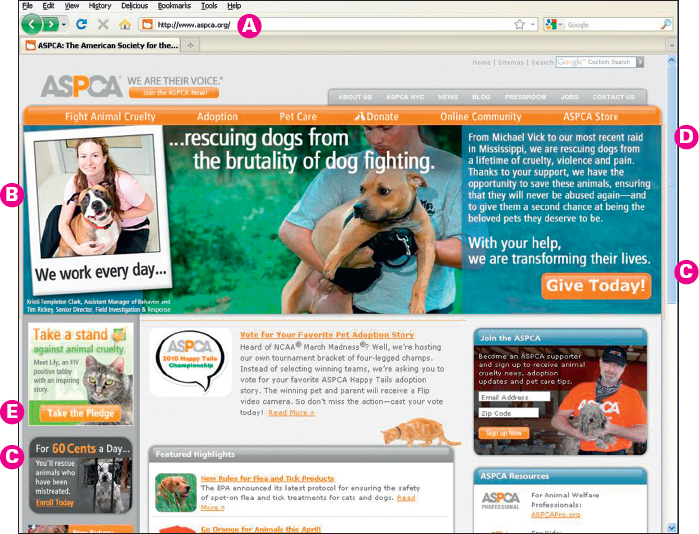Evaluating Library and Internet Sources
Not every source you locate will be equally reliable or equally useful. Sites recommended by your library have been screened by professionals, but each has its own point of view or approach, often a necessary bias to restrict its focus. Sources from the Web require special care. Like other firsthand materials, postings, blogs, and sites reflect the biases, interests, or information gaps of their writers or sponsors. Commercial and organizational sites may supply useful material, but they provide only what supports their goals — selling their products, serving their clients, enlisting new members, or persuading others to accept their activities or views. See Figure 33.1 for a sample evaluation of a Web site that provides both informative and persuasive materials.
How can you simplify evaluation? Begin with your selection of sources. Suppose you draw information from an article in a print or online peer-reviewed journal. The evaluation of that article actually began when the journal editors first read it and then asked expert reviewers to evaluate whether it merited publication. Similarly, a serious book from a major publishing company or university press probably has been submitted to knowledgeable reviewers. Such reviewers may be asked to assess whether the book or article seems well reasoned, logically presented, and competently researched. However, they can’t decide if the work is pertinent to your research question or contains evidence useful for your paper.
How do you know what evidence is best? Do what experienced researchers do — ask key questions. Use the time-tested journalist’s questions — who, what, when, where, why, how — to evaluate each of your sources.
RESEARCH CHECKLIST
Evaluating Sources
Who?
- Who is the author of the source? What are the author’s credentials and profession? What might be the author’s point of view?
- Who is the intended audience of the source? Experts in the field? Professionals? General readers? People with a special interest? In what ways does the source’s tone or evidence appeal to this audience?
- Who is the publisher of the source or the sponsor of the site? Is it a corporation, a scholarly organization, a professional association, a government agency, or an issue-oriented group? Have you heard of this publisher or sponsor before? Is it well regarded? Does it seem reputable and responsible? Is it considered academic or popular?
- Who has reviewed the source prior to publication? Only the author? Peer reviewers who are experts in the area? An editorial staff?
What?
- What is the purpose of the publication or Web site? Is it to sell a product or service? To entertain? To supply information? To publish new research? To shape opinion about an issue or a cause?
- What bias or point of view might affect the reliability of the source?
- What kind of information does the source supply? Is it a primary source (a firsthand account) or a secondary source (an analysis of primary material)? If it is a secondary source, does it rely on sound evidence from primary sources?
- What evidence does the source present? Does it seem accurate and trustworthy? Is it sufficient and relevant given what you know? Does its argument or analysis seem logical and complete, or does it leave questions unanswered? Does it identify and list its sources or supply active links?
When?
- When was the source published or created? Is its information current?
- When was it last revised or updated? Is its information up-to-date?
Where?
- Where did you find the source? Is it available through your campus library’s site? Is it on a Web site that popped up in a general search?
- Where has the source been recommended? On an instructor’s syllabus or Web page? On a library list? In another reliable source? During a conference with an instructor or a librarian?
Why?
- Why should you use this source rather than others?
- Why is its information directly relevant to your research question?
How?
- How does the selection of evidence in the source reflect the interests and expertise of its author, publisher or sponsor, and intended audience? How might you need to qualify its use in your paper?
- How would its information add to your paper? How would it help answer your research question and provide evidence to persuade your readers?
- See more on evaluating field sources.


A.
B.
C.
C.
D.
E.
E.